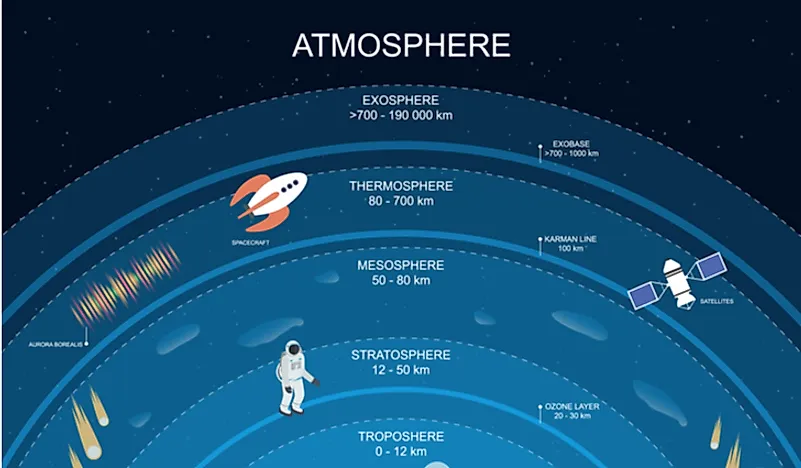How Cold Is The Exosphere?

The Earth's atmosphere is composed of five layers: the troposphere, stratosphere, mesosphere, thermosphere, and exosphere. The exosphere is the uppermost layer of Earth’s atmosphere, and is point at which the atmosphere becomes thin and merges with interplanetary space. This outer layer of the atmosphere is approximately 6,200 miles thick and contains gases such as helium and hydrogen, as well as traces of carbon dioxide and oxygen. Temperatures are generally cold in the exosphere, and the upper boundary of the layer is characterized by a solar radiation pressure on hydrogen that is greater than the gravitational pull of Earth. Scientific research equipment, such as the satellites and spacecraft, orbit Earth within the exosphere.
Temperature of the Exosphere
The exosphere is closer to the Sun than the other layers of the atmosphere and therefore is the warmest. However, the temperature of the exosphere varies greatly, usually between 0 °C and 1700 °C, and can even experience very cold temperatures, which is attributed to several factors. For example, the exosphere contains a very thin layer of air resulting from particles escaping into outer space, making the exosphere a vacuum. The number of particles in the exosphere is low due to high air density, and therefore heat transmission from the Sun is minimal. Additionally, atoms and molecules in the exosphere are so far apart from each other that they can travel several kilometers without colliding. Therefore, given minimal heat transmission to objects on Earth, the exosphere can be cold. Measuring the temperature of the exosphere is achieved by observing the movement of particles in the air. Fast moving particles indicate high temperatures, whereas slow moving particles indicate cold temperatures in the exosphere.
Significance of the Exosphere
The exosphere serves two important functions in terms of protecting humans on Earth. First, the outer layer of the atmosphere protects Earth from the harmful rays of the Sun. Additionally, the exosphere acts as the first layer of protection between Earth and space objects that enter the atmosphere, such as meteors, cosmic rays, and asteroids.











